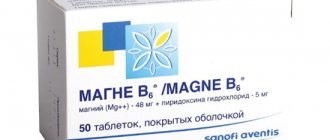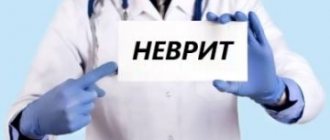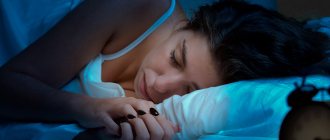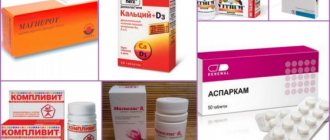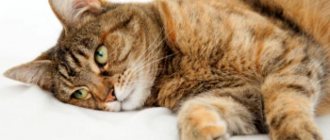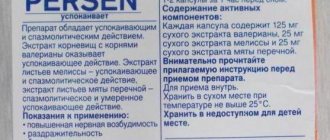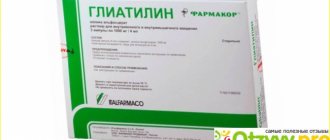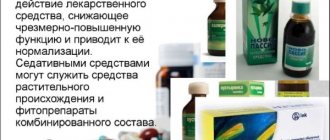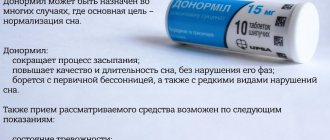Sedatives, also called sedatives or psycholeptics, are often used in medicine. One of the reasons for their popularity can be called the modern rhythm of life, filled with stress, mental and physical overload, and lack of sleep. Let's look at how sedative therapy works and what drugs from this group are available.
Anxiolytics (tranquilizers)
Anxiolytics are one of the most powerful groups of sedatives among those presented. These are full-fledged drugs, usually synthetic. They have been used for a long time and successfully to treat a wide variety of pathological conditions.
The rationale for using these medications stems from the actions of tranquilizers.
Among the effects of anxiolytics:
- Hypnotic. A person literally wants to lie down after just a few tens of minutes. And this is against the backdrop of other useful results.
- Muscle relaxant. Relaxation of skeletal muscles, decreased tone. Elimination of psychomotor agitation. It is beneficial both for sleep and in the treatment of specific conditions such as epilepsy.
- Sedative effect. It is based on the ability to actually reduce the activity of certain areas of the brain. Thanks to this, emotional stress, fear, and anxiety are eliminated. Everything that accompanies pathologies of neurological and psychiatric origin.
- The anticonvulsant effect is indispensable in the treatment of diseases such as epilepsy. Therefore, anxiolytics become the drugs of choice for the correction of pathological conditions.
Regarding the general indications for the use of drugs:
- Neuroses. Acute and chronic forms of disorders. A classic of the genre is the so-called obsessive-compulsive disorder. When a person is haunted by obsessive thoughts and rituals. The level of fear and tension gradually increases, anxiolytics are designed to normalize the condition.
- Anxiety disorders. Lots of anomalous variations. All of them, one way or another, represent a form of neurosis. The disease significantly reduces the quality of life. But doctors are trying to get by with psychotherapy. Tranquilizers are used as a last resort and only in small doses.
- Panic attacks. Attacks of strong groundless fear. The disorder develops spontaneously and does not allow a person to find a place for himself. The pathological condition can last up to several tens of minutes. The episode can only be removed with the help of anxiolytics. Often also in combination with antidepressants.
- VSD. Vegetovascular dystonia. Tranquilizers are designed to reduce the intensity of electrical activity in the brain. It is precisely what prevents the nervous system from working normally that provokes the notorious vegetative symptoms. Minimum dosages of the drug are required.
- Withdrawal symptoms. Acute conditions after taking alcohol, drugs and abruptly refusing new “doping”. Tranquilizers are not the main drugs for combating such disorders. However, they are the ones who make it easier to endure an unpleasant condition and overcome it. Hold on and don't break down.
- Epilepsy. Chronic neurological disease. Characterized by an increase in electrical activity in certain areas of the brain. The result of such hyperstimulation is convulsive seizures with increased muscle tone and loss of consciousness. Sometimes the symptoms are milder.
- Upcoming surgical treatment. As part of premedication.
Of course, the indications for tranquilizers depend on the specific name. And the combination of effects will be different. Some are more focused on sedative, others on hypnotic results.
Let's present the most popular variants of drugs from the anxiolytic group:
Diazepam
A classic and gold standard for the treatment of various conditions. The beneficial effect occurs after 30-40 minutes and lasts up to several hours. Perhaps more.
The tool is quite powerful. Prescribed for all the conditions described above, as a primary or maintenance drug.
Phenazepam
Phenazepam is a good sedative tablet for the nervous system. Also available in ampoules. The result is achieved after 20-30 minutes and lasts up to 10 hours. Much depends on the state of the body. You can't drink it for a long time. At most - a month.
Grandaxin
Aka Tofisopam. A fast-acting drug, it does not create the effect of drowsiness, therefore it is actively used for the treatment of vegetative-vascular dystonia and other similar conditions that do not require restoration of sleep.
It has some disinhibiting, activating effect. Well tolerated.
Gidazepam
Approximately the same strength as Tofizopam, and also does not create drowsiness, a feeling of fatigue, and normalizes the emotional background.
It is used as part of the correction of anxiety disorders, and in the complex treatment of depression it enhances the effect of the main pharmaceutical agent.
Atarax
Atarax is an effective sedative. Does not put stress on the heart. In addition, it is very well tolerated overall. It has an antiemetic effect in addition to others. Due to the high degree of safety, it is approved for use in children.
Sedative groups of tranquilizers are prescribed for the treatment of anxiety disorders, fear, panic attacks, and neurological disorders.
But they are quite dangerous because they cause physical dependence in a matter of weeks and months.
If you take them in excessive quantities, without a clearly verified system, there is a high probability of developing abstinence and withdrawal syndrome. These are very painful conditions that will have to be treated separately.
Therefore, you can take tranquilizers only as prescribed by a doctor, strictly following the chosen regimen.
Antipsychotics
Another very common name is neuroleptics, which is no longer entirely true. This is a group of complex drugs. The main task is not only and not so much to eliminate anxiety, but to remove the symptoms of acute psychotic disorder.
As a rule, such deviations are accompanied by changes in perception. Hallucinations and delusions.
The notorious “voices in the head,” according to researchers, are caused by excessive activation of Broca’s area, which is responsible for the perception of internal speech and one’s own thoughts as a product of the brain.
With excessive excitement, the work of the “friend or foe” system is disrupted and thoughts are felt as an outside voice.
With delirium everything is more complicated. But be that as it may, the cause is always a violation of the normal metabolism of dopamine. It is like fuel for the mental process, the transmission of nerve impulses.
Therefore, the action of antipsychotics is based on blocking the production or metabolism of neurotransmitters. In particular, the already mentioned dopamine.
How exactly they deal with this depends on the class of antipsychotic. Conventionally, “side” effects are sedation, normalization of the emotional background.
In what cases are they used:
- Hallucinations. Acute perceptual disorders. It seems to a person that someone is speaking to him and sees colorful or vague images. There are also so-called pseudohallucinations.
They are characteristic of schizophrenia. In such a case, the person understands that voices and so on exist in the subjective psychic field, and no one else perceives these stimuli.
- Rave. Deviation of thinking. Characterized by inadequate judgments and constructions. The plot depends on the worldview and other factors.
- Anxiety due to mental problems.
- Affective disorders. To a lesser extent. Medications with an activating effect are prescribed.
- Negative symptoms. Apathy, abulia. Other forms of defect, especially schizophrenic. Everything that “erases” the patient’s personality turns him into a weak-willed “vegetable.”
Antipsychotics fall into two broad categories:
- Typical. Classics, the very first to appear. A potent sedative that has the ability to completely eliminate hallucinations, delusions and fears, these include Aminazine and Haloperidol. These drugs act very roughly, but effectively. It is with them that the treatment of acute conditions begins.
- Atypical. They work more gently and produce many times fewer side effects and complications. Easier to carry. In addition, they have an activating effect. They allow you to preserve your intellect, will, and emotions even with the development of schizophrenia.
True, acute pathological conditions are handled worse. Mainly used as maintenance therapy. To prevent a relapse of psychosis. There are exceptions.
Now let's move on to the most popular drug names:
Aminazine
Morally outdated, but still used in domestic practice. A larger dosage is required to combat the symptoms of the disorder. It gives many side effects, but has a powerful sedative effect.
Haloperidol
Haloperidol is a classic sedative drug; it is used to relieve most psychoses. The sedative effects of Haloperidol are so strong that a person falls out of life during therapy. Most of the period is “passed out”.
The drug has many side effects. Therefore, it is not suitable for systematic therapy. There are safer analogues.
Risperidone
Also known as Rispolept and several other trade names. Modern antipsychotic. Acts quickly and powerfully. But it causes an increase in prolactin, hormonal imbalance and quickly leads to weight gain.
Ariprizole
Perhaps the most modern drug. It has not only an antipsychotic, but also a disinhibiting, activating effect.
Therefore, it helps to return to normal life. Combats negative symptoms. The sedative effect is minimal.
There are extended-release medications. In depot format. They are administered several times a month, and they work constantly, being released into the blood in certain doses.
This is especially convenient if you are treating a patient who is not very inclined to follow the specialist's recommendations.
Antipsychotics are also addictive when used over a long period of time. True, it’s not like that. There is no withdrawal. But withdrawal syndrome develops in a matter of weeks.
Attention:
Considering that antipsychotics have been taken for years, we can say that a pathological process is guaranteed to occur. The question is, what strength? To finally “get off” the drugs, you will have to turn to a psychiatrist again.
Neuroleptics, as sedatives for the nervous system, are used in difficult cases: in acute hallucinatory and delusional syndromes, as part of the complex treatment of schizophrenia and other organic psychoses.
They are simply not prescribed that way.
Cooking recipes
Traditional medicine has many different recipes for the preparation of combined sedatives. They can be used not only to treat neurotic conditions, but also to prevent such serious pathologies as stroke or heart attack.
The classic recipe for a sedative tincture of 5 ingredients is simple. To prepare it you will need to take equal amounts of tinctures:
- hawthorn;
- valerian;
- Corvalol;
- motherwort;
- peony
Mix all ingredients in a clean glass container. You can add a little cinnamon or cloves to add extra flavor.
Recipe No. 2
To prepare the following recipe you will need tinctures:
- valerian – 2 parts;
- peppermint – 2 parts;
- peony – 2 parts;
- motherwort – 2 parts;
- eucalyptus – 1 part.
All ingredients, except eucalyptus tincture, are taken in equal proportions. In turn, you should take half as much eucalyptus. This is due to the fact that eucalyptus in some cases can cause irritation of the gastric mucosa, so the recipe is not suitable for people with gastrointestinal problems.
At the same time, eucalyptus extract has not only a sedative effect, but also a pronounced antiseptic and anti-inflammatory effect, which makes it indispensable for mild colds and the treatment of blues in the off-season.
Recipe No. 3
To prepare the collection you will need the following ingredients:
- calendula;
- mint;
- motherwort;
- chamomile;
- hop.
All components must be mixed in equal proportions. This collection is especially useful for women's health. The drug contains hops, the therapeutic effect of which is similar to valerian, but the effect is milder.
Moreover, hops contain phytoestrogens, which help relieve postmenstrual symptoms and menopausal symptoms. Mint, thanks to its antispasmodic properties, helps eliminate pain symptoms, and chamomile and calendula effectively fight depression.
Recipe No. 4
To prepare the following herbal composition, you will need:
- 1 part each: tinctures of horse chestnut, hawthorn, peppermint;
- 2 parts each: valerian, motherwort.
All components are mixed in a glass container. The drug is recommended for the prevention of cardiovascular diseases.
Recipe No. 5
For the treatment of depression and apathy, it is recommended to prepare the following calming mixture. For preparation you will need tinctures:
- valerian;
- chestnut;
- lemon balm;
- chamomile;
- thyme (thyme).
All ingredients are taken in equal parts. The collection is recommended for chronic fatigue, stress and nervous exhaustion.
Barbiturates
A group of drugs that depress the central nervous system. They are used as part of the systemic treatment of diseases of cerebral structures, and less often of the psyche.
The list of indications is the widest. We are talking about pathologies such as VSD, insomnia, and organic disorders of the brain.
Attention:
They should not be taken in large quantities. There is a real risk of respiratory depression, cardiac depression and death. The drugs are very sensitive to dosage, so caution must be exercised.
Sedatives for the adult nervous system of the barbiturate group are used to treat neuroses, disorders of the central nervous system, and also, in some cases, cardialgia of psychosomatic origin.
As for the subgroups of medications, there are several of them:
- Very short-acting agents. They are not used as actual medicinal drugs. Used to put a person under anesthesia.
- Medium duration. They start working in half an hour, after 5-6 hours it’s all over.
- Long-lasting. For example, Phenobarbital.
It became almost impossible to obtain barbiturates. Previously, they were actively used to commit suicide, so the movement of such medications was limited. In addition, you cannot use them on your own, without a doctor’s approval.
The sedative effect of drugs from the barbiturate group is based on depression of the central nervous system; this is a dangerous option; you can resort to such drugs in extreme cases.
How to take it correctly
You need to take sedative mixtures 10–30 drops, 1 to 3 times a day. Before use, the preparations are diluted in 50 ml of water. It is better to take the medicine half an hour before or half an hour after meals. The dosage of the drugs depends on the medical history:
- chronic stress, apathy, depression – 10–12 drops, 3 times a day;
- insomnia – 2 times a day, at lunch and before bed, 20 drops;
- severe stress - one-time dose - 30 drops, two days, 10 drops, 3 times a day.
https://www.youtube.com/watch?v=ChvvqtGJOls
To avoid addiction to the drugs, the maximum duration of the course should be no more than 2–3 weeks. Then you should take a break of at least 1 week. Before taking sedatives, it is recommended to consult a doctor.
Antidepressants
A group of medications that act on the emotional background. Despite the name, there are much more indications for the use of such drugs than it seems:
- Anxiety disorders. As part of complex therapy. Along with tranquilizers.
- Psychotic pathologies. Because they are accompanied by emotional disorders.
- Affective disorders. Type BAD (bipolar affective disorder) and others. The gold standard for correction of the pathological process.
- Depression. A deviation in which a triad of signs is present: weakness, instability, low mood.
They are used in other cases, at the discretion of the doctor. The main thing is that they are able to calm, relieve stress and restore the emotional background.
The basis of the pharmaceutical effect of sedatives from the antidepressant group is the effect on the concentration and balance of the neurotransmitters dopamine, serotonin, and norepinephrine.
There is no point in going into classification. This is a very confusing and large-scale topic. It is worth noting that drugs of this type need to be used for at least several months in any case. Otherwise there will be no point.
Attention:
Many type antidepressants are poorly tolerated. In particular, extrapyramidal disorders develop, which greatly reduce the quality of life.
Side effects are something to be wary of. If something happens, consult a doctor again.
Herbal preparations and sedatives based on them
Can be used without special restrictions and purchased at a pharmacy without a doctor's prescription. Strictly speaking, these are not exactly drugs. More of a supportive measure.
Calming agents based on phytocomponents help relieve anxiety, stress, and increase the body's adaptive resource and adaptability.
But by themselves, these are not complete medicines. They can only be used in a system with others.
Among the most popular options:
- Valerian in tablets or tincture. Reduces anxiety, normalizes sleep, and has a mild sedative effect.
- Motherwort. It has the same sedative effects, plus it affects the autonomic component of the heart.
- Persen. Natural preparation based on herbal extracts. Calms the nervous system and has a mild hypnotic effect.
There are inexpensive and semi-synthetic sedatives such as Afobazol, Novo-passit (one of the best sedatives of plant origin, over-the-counter). But they cannot be considered as full-fledged medicines.
Sedatives before flight
15% of the population is susceptible to aerophobia; the remaining air passengers, to one degree or another, worry about the outcome of the flight. Sedatives can help you cope with your worries before a flight.
They are:
- Sedatives made from natural herbs will help you cope with your emotions. It is recommended to start taking treatment 2 weeks before the flight, because... Herbal preparations do not begin to act immediately.
- Tranquilizers are “a medicine against fear.” They can quickly relieve a panic attack and fight strong phobias. These are prescription drugs.
- Barbiturates or sleeping pills will help you “sleep through” the entire long flight. Take them 15-20 minutes before boarding the airliner. Not recommended for short flights.
